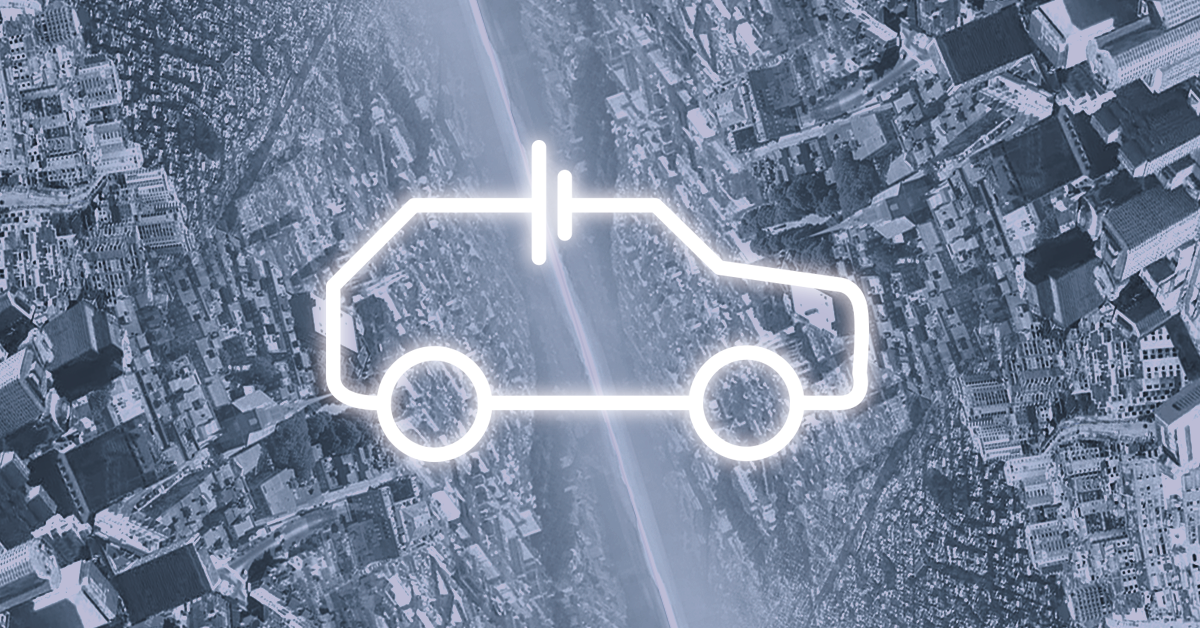
Energy systems are being supported by new vehicle-to-grid technology that allows power grids to exchange information and energy with charging electric vehicles. This will allow them to operate efficiently and support cleaner technologies.
Bi-directional charging stations are constructed in a way that allows energy to flow to and from electric vehicles and the grid. Electricity is either drawn from the grid or generated by photovoltaic solar panels which charge electric vehicles plugged into the system.
Electric vehicles, however, are still not the consumer’s default choice. EV sales as a fraction of all new car sales were 1.5% in early 2019.
Combining design thinking and data-driven development will improve user experience and product development of vehicle-to-grid technology.
V2G data deluge
The amount of complex data generated is increasing at an exponential rate. BMW reported that autonomous vehicles would produce more than 16-40 terabytes of user and vehicle data per day. To realise the value of V2G, we offer guidance on how to minimize some of the design challenges businesses will face in 6 core areas.
Defining digital services that create value in a V2G ecosystem
Digital services, driven by data, will augment and enable the V2G service ecosystem. This system comprises of six core areas:
1. Users
Drivers will be able to charge their vehicles when parked or release energy from the vehicle’s battery. Data showing when drivers return unused power to the grid instead of charging their cars will be useful for businesses as they improve their products and services.
With large volumes of data, user take-up of mobile apps, digital products or in-vehicle warnings will depend on their ease-of-use.
Design challenge: B2C services may need to simplify the complexity of the V2G ecosystem to show basic benefits and opportunities to users. Currently, there are many facets to the V2G ecosystem that requires users to invest in a lot of work within the system.
2. Infrastructure
An influx of energy flowing into the national transmission system could be eased through mobile energy units (vis-à-vis electric vehicles) to aid local networks.
Homes and local infrastructure could be powered through surplus energy; the grid would be regulated at peak demand, while cars would be charged at night and drivers would benefit from lower-cost energy.
Design challenge: We often see that decision-makers lack the appropriate tools in which to make decisions with. Investing in platforms that make use of environment and transport network data will allow for important insights to be delivered quickly.
3. Fleets
Electric vehicles will play a role in the generation of renewable energy. They can store and dispatch energy en masse, and be organised en masse, acting as a collective fleet of batteries. In order to supply local networks, extra energy capacity to the national transmission system could be supplemented by mobile energy units within close proximity.
Design challenge: User research into needs around fleet services and charging should focus on the expectations of convenience and customisation. Fleet users will need to understand the capacity, availability cadence and coverage of the system they are using. Design features that enable the correct degree of system visibility will support the efficiency of EVs.
4. The V2G gateway
Bi-directional charging stations are designed to allow energy to flow to and from electric vehicles and the grid. Electricity is either drawn from the grid or generated by photovoltaic solar panels which charge electric vehicles plugged into the system.
Design challenge: Gateway stations will need to arbitrate between different vehicles and varying energy pricing and availability. Understanding the main customer journeys and pain points of users as they use these stations should be the starting point of any development process.
5. The Grid
Network operators will need services that allow them to monitor the system while simultaneously viewing potential opportunities and threats.
Design challenge: Alert systems for middle management and analytics systems to the operational staff will be beneficial here. This multifaceted view of overview to detail is consistent with other work we have done in the mobility, governmental and finance sector.
6. Energy Brokerage
As stores of renewable energies in vehicle batteries act as a power source, suppliers will rely less on fossil fuel power. Extra energy capacity from electrical vehicles will compliment energy stored from solar and wind generation.
Design challenge: The energy market will need a consistent way of sharing and discussing the information collected, with a dynamic of visual standards similar to the interfaces used in the financial and trading sector.
A design-thinking and data-driven approach are key in commercialising the decisions drivers make. The V2G space will be complex and competitive as corporations vie for their share of revenues. Well-designed, user-focused systems, however, will open up commercial and operational success.
If you would like to know more about how we help companies create new services from their data, get in touch at [email protected].